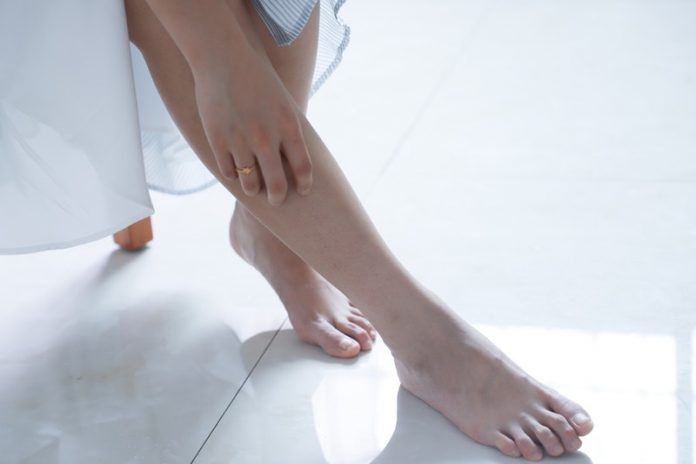
Peripheral artery disease develops silently, narrowing blood vessels for decades until the supply of nutrients and oxygen falls low enough to cause cramps and leg pain.
Initially, the body may form smaller blood vessels around the blocked ones to reroute some blood.
Once the condition advances, those who experience it can develop severe leg cramps when they walk a lot, but that the pain disappears when they sit and the demand for nutrients and oxygen decreases.
“Pain with physical exertion is a classic, hallmark sign,” said Dr. Faisal Aziz, chief of vascular surgery at Penn State Health Milton S. Hershey Medical Center.
“When it gets really bad, it can form wounds on the legs that do not heal or cause blackening of the foot or toes.”
Risk factors for the disease include age and gender. Men, and all people age 65 and older, are most likely to develop the condition. People who have heart disease are also predisposed to it.
Most of the other risk factors – smoking, high blood pressure, high cholesterol and uncontrolled diabetes – can be modified with education, medication and/or lifestyle changes.
Aziz said many of his older patients with the condition grew up during a time when the hazards of smoking and inhalation of secondhand smoke were not well known.
“The body is very forgiving, so we keep abusing it,” he said. “But in this case, prevention is better than a cure.”
Aziz said anyone who has some of the risk factors, along with pain in their legs, should discuss the possibility of the disease with their primary care physician.
“If you aren’t exercising or walking enough, you won’t even know you have it until it has silently progressed,” he said.
“Most physicians will also recommend that you walk more to help the condition because that encourages your body to form other vessels around the blockage.”
Medications that help modify risk factors such as high blood pressure, cholesterol and insulin levels have shown to be helpful, but the condition can’t be reversed once it begins.
“Whatever blockages have occurred will not go away unless they are stented or bypassed,” Aziz said. “But risk-factor modification can slow the progression of the disease.”
In cases where walking doesn’t improve the situation, 70 to 80 percent of patients can be helped with minimally invasive procedures that involve injecting dye into the vessels and placing balloons or stents in the vessels to help with circulation.
He said more serious cases may need a surgical bypass where blood is rerouted from the damaged vessel to a good one nearby.
“It’s like building a bridge across a body of water though, so there are times we can’t even do that,” he said. “We need a good piece of land on both sides.”



